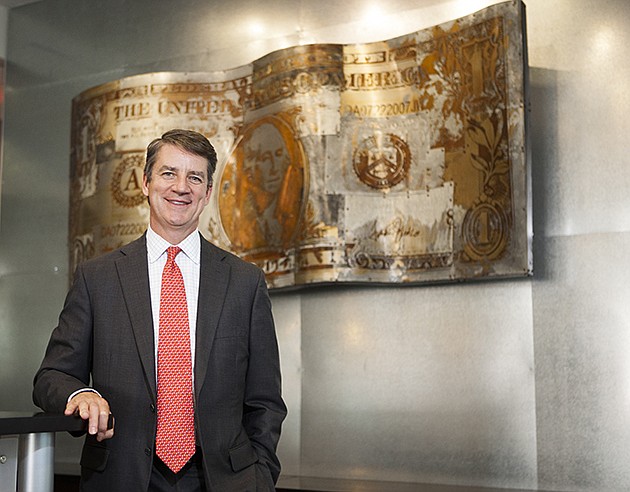Al Rogers
Executive vice president and senior lender
USAmeribank, Tampa
Al Rogers began his banking career with Charlotte, N.C.-based First Union Corp. in the company's Tampa office in 1987. A decade later, he became a partner and a member of the board of Manufacturers Bank of Florida, a community bank that was sold to Colonial Bank in 2002. Rogers remained at Colonial until 2007, when he joined the then-recently formed USAmeribank. Today, he is an executive vice president and senior lender at USAmeribank, one of the most active commercial real estate lenders along the Gulf Coast. In that capacity, Rogers also is in charge of the bank's commercial lending operations.
How would you describe the current state of the commercial real estate market in the Tampa area?
I think the market is healthy and fairly well balanced, and there's a decent balance between buyers and sellers. Housing has rebounded, which always has a positive effect on commercial real estate, and retail development in particular is pretty brisk. Multifamily, too, has certainly heated up, particularly in urban cores, the result of live-work-play efforts.
There's also a fairly substantial amount of construction at the upper end of the multifamily market, which means those properties are going to have to perform at a fairly high level, with higher rents and relatively low vacancies. New restaurants and grocers and stores provide an indication that there's been growth in disposable income and there are new rooftops to serve. There's been a long, dry run in that department. It's generally healthy in terms of market conditions whenever you see new construction.
Are there particular sectors, i.e. office, retail, industrial, that are more active at present from a lending perspective than others?
Multifamily has most certainly been the most brisk sector in the region, and retail has also been very healthy, with the office and industrial markets regionally more measured and tenant-driven. Generally, the conventional thinking in banking is that you need enough pre-leasing to at least break even with the cost of development. Given new regulations associated with the appraisal industry, there are now several terms appraisers use to conclude value. We often look at loan-to-cost as a significant number when lending as well. But overall, there needs to be significant equity from a developer or borrower up front to cover any first mortgage.
Are area lenders facing greater competition, and does that pose a risk to loan quality at all?
From the depths of the financial crisis in 2008, there's today substantially more competition. There was a period during the recession when the markets were virtually frozen, and there were very few banks and lenders out there participating in development loans. During that period, the rate and structure of deals were highly restrictive. But as more competition has crept back into the market, the more choices there are for commercial developers. We've seen more non-traditional lenders serving the needs of developers, especially those looking to build more on a speculative basis, but those loans are more expensive and less regulated forms of capital.
There's been considerable talk about the role of non-traditional lending sources to the commercial real estate industry in this cycle. What are the implications of that trend?
We're in an extremely low interest rate environment on an absolute basis, so hedge or pension funds or other non-traditional lenders are in the market looking for some reduced volatility but also for positive returns. They tend to be more flexible in their lending, and they're not necessarily saddled with the same regulatory burdens that accompany a more traditional bank.
But that comes at a price. Generally those lenders are more expensive in their rates. With the prime rate at 3.45%, non-traditional lenders are charging as much as 12% to 15%, or they require additional equity up front or payments when a project sells, that sort of thing. It depends a lot on the level of speculation associated with a project. They tend to be almost joint venture arrangements. Less riskier investments, meanwhile, still tend to find their way to banks.
In the wake of the recession, new laws like the Dodd-Frank Act sought to prevent another financial collapse. What's been the result of these new regulations and the impact on the commercial real estate market in Tampa?
Things move a littler more methodically now, there's more discipline in the underwriting, more third-party reports, market studies, appraisals and other ways to validate projects. Stress testing is something regulators are requiring of banks, and there's an assumption that interest rates will rise and occupancy rates may not be as high as projected for any project.
There's more conservatism built in to the loans banks are willing to make. Commercial real estate is cyclical and always has been, but hopefully the new rules in place will temper future swings to some degree. Clearly that's been the intent.
What do you see for 2016 and 2017 for the commercial real estate industry along Florida's Gulf Coast?
I see solid and continued growth. We're told that 1,000 people a day are moving to Florida, and between the sunshine and the price of oil and our favorable tax status, I think we'll continue to see solid migration, which tends to support growth. As long as the global economy holds up and interest rates remain attractive and inflation is held at bay, I think we'll be OK for the foreseeable future. We're certainly not in the early stages of economic recovery, but we still have room to grow because there has not been a real boom since 2008. If we're in a nine-inning game, I'd say we're in the middle of the seventh inning. We still have a little more time to play.






